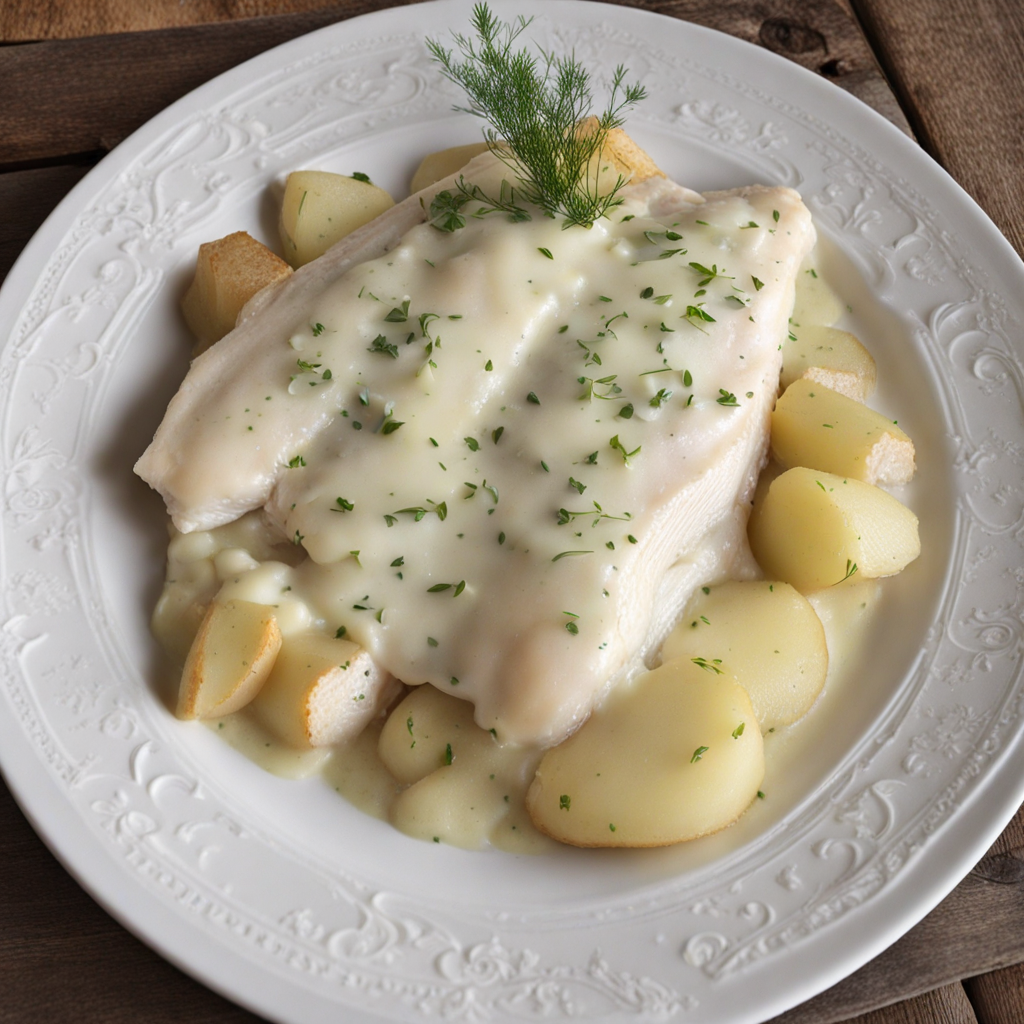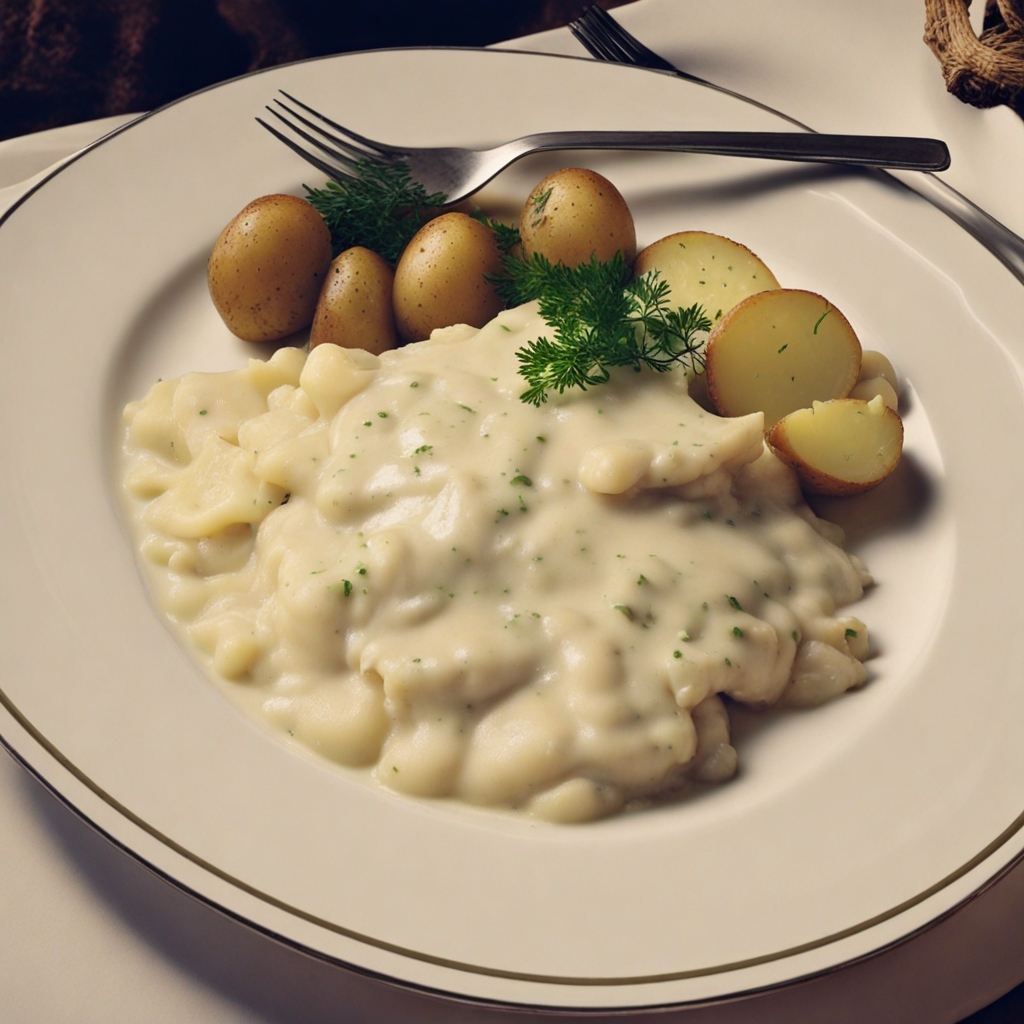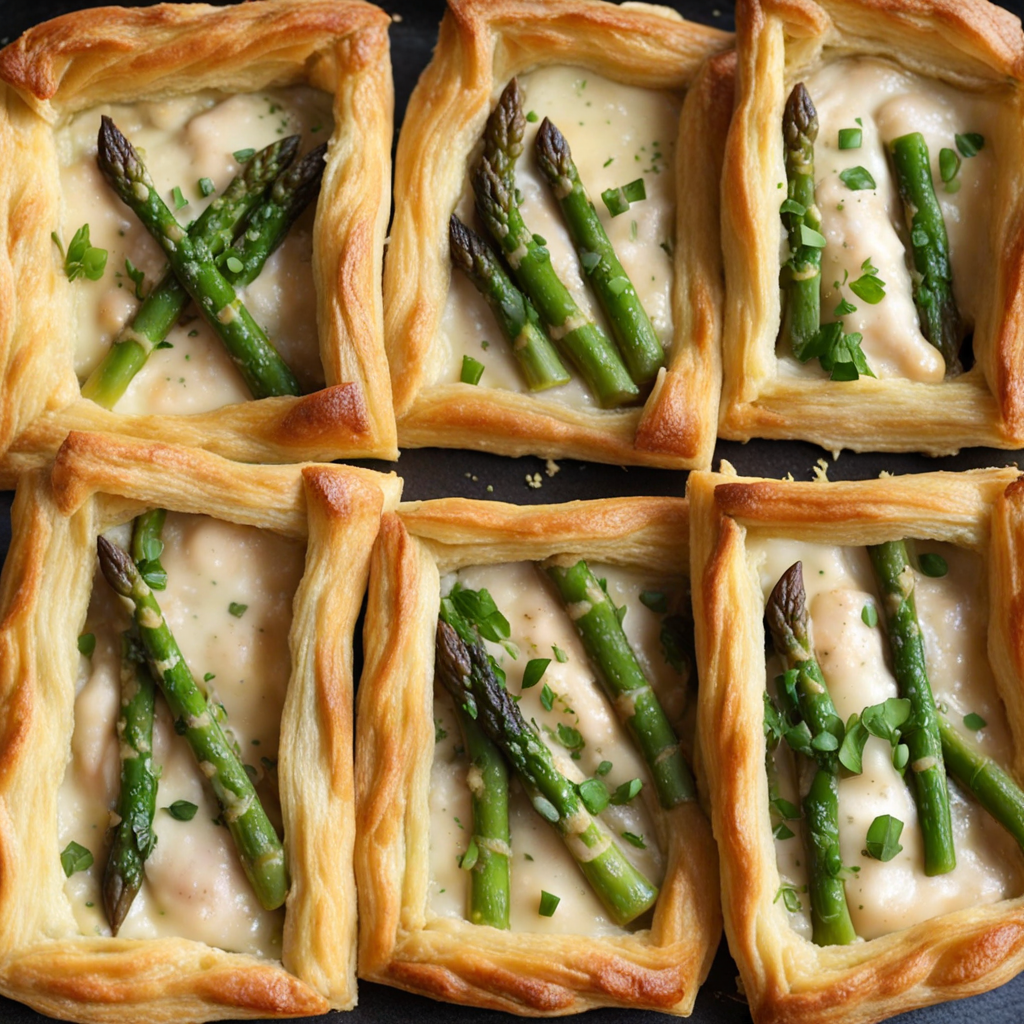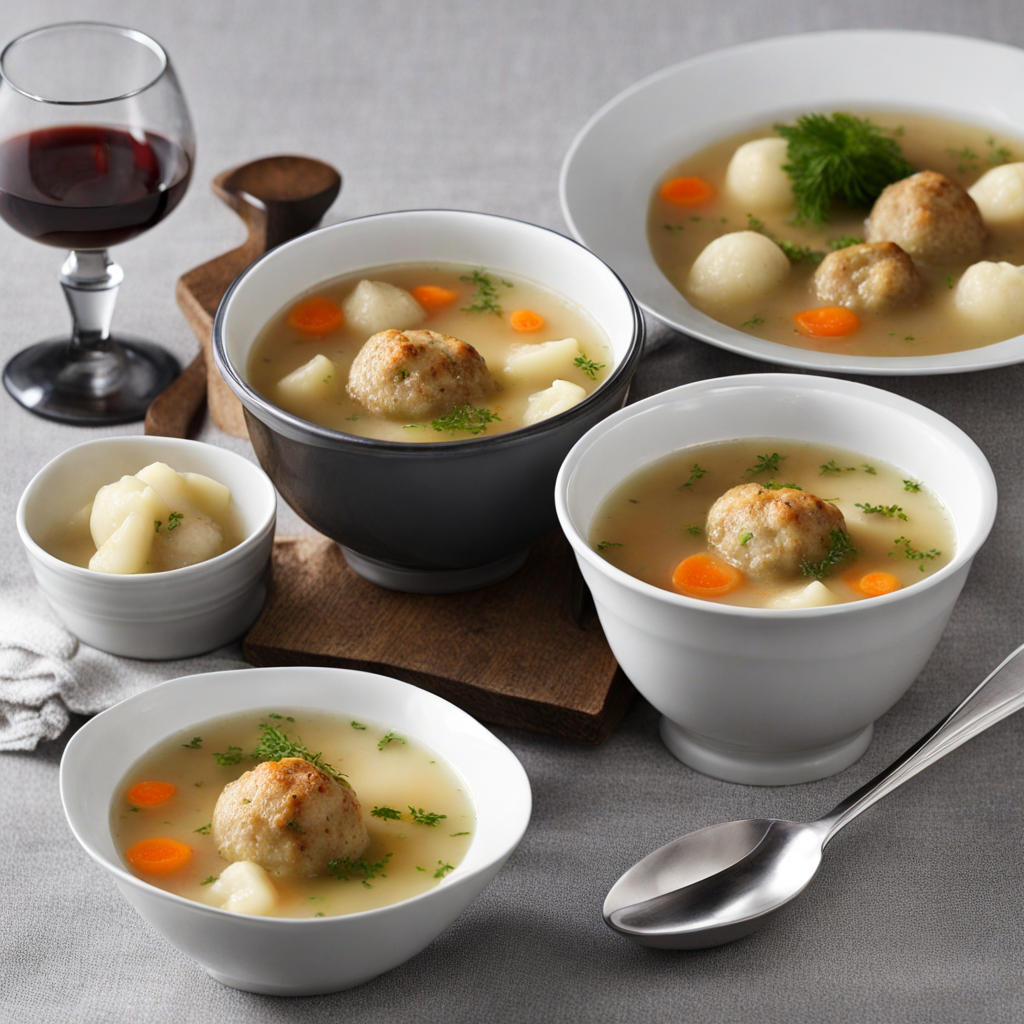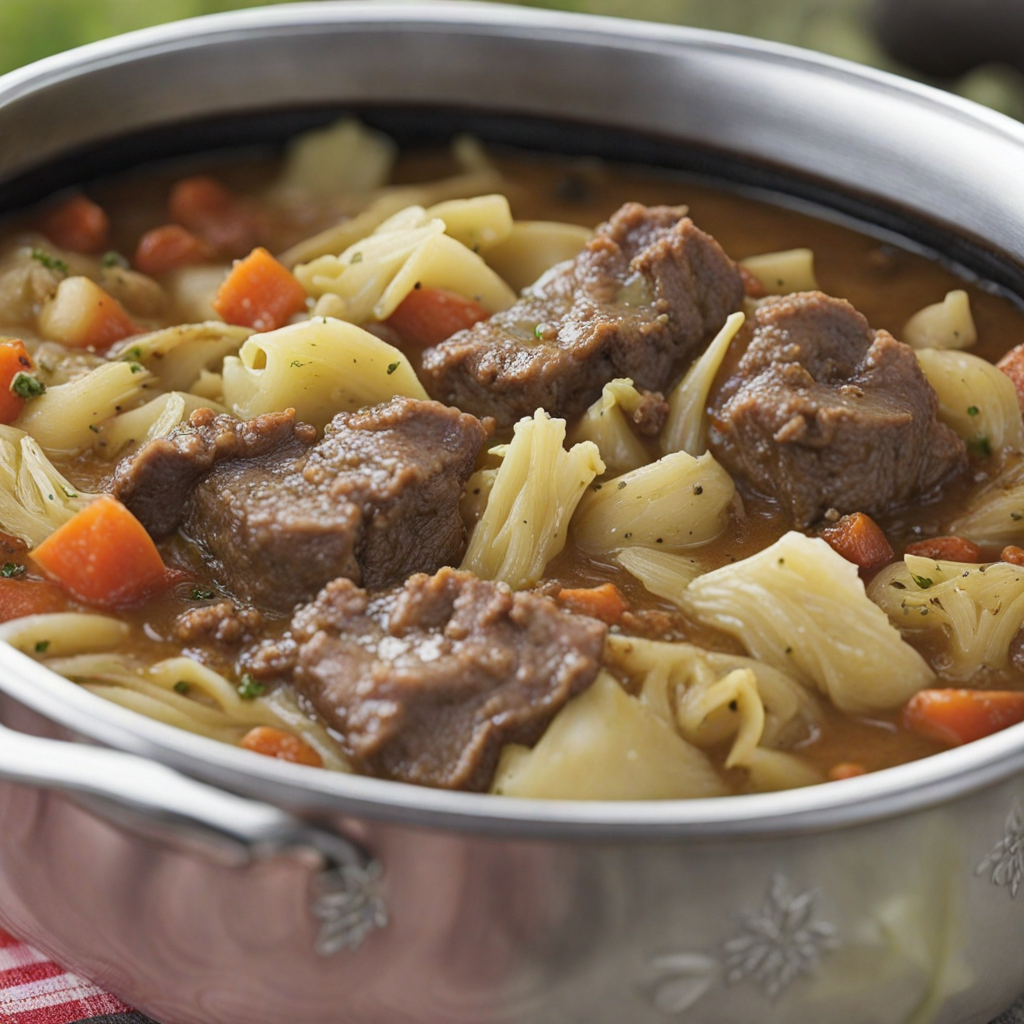Plukfisk
Plukfisk is a traditional Danish dish that showcases the coastal heritage of Denmark through its delightful combination of flavors and textures. At its core, Plukfisk consists of fish, usually herring or cod, that is gently cooked and then flaked into tender pieces. The fish is often complemented by a creamy sauce made from a rich blend of butter, flour, and milk, creating a velvety base that envelops the flaked fish. This comforting dish is typically served with a side of boiled potatoes, which soak up the delicious sauce, allowing for a harmonious balance of flavors in each bite. In addition to the fish and sauce, Plukfisk often incorporates a medley of vegetables such as carrots, peas, and onions, adding both color and nutrition to the dish. The vegetables are usually sautéed until tender, contributing a subtle sweetness that contrasts beautifully with the savory elements. The combination of fresh herbs, like dill or parsley, is often sprinkled on top, providing a fragrant finish that elevates the overall taste experience. Each component works together to create a dish that is not only satisfying but also tells a story of Denmark's rich culinary traditions. Plukfisk is more than just a meal; it’s a celebration of the sea and the simple pleasures of home-cooked food. Its comforting nature makes it a popular choice during the colder months, ideal for family gatherings or cozy dinners. As you savor each bite of Plukfisk, you’ll find yourself immersed in the flavors of Denmark, discovering the unique charm of this traditional dish that has stood the test of time.
How It Became This Dish
Plukfisk: A Culinary Journey Through Denmark’s History Plukfisk, a traditional Danish dish, epitomizes the intersection of practicality, simplicity, and cultural identity in Denmark’s culinary landscape. This fish dish, with its humble origins and hearty flavors, has woven itself into the fabric of Danish culture over centuries, reflecting the nation’s relationship with its coastal geography and fishing traditions. Origins: The Maritime Roots The origins of Plukfisk can be traced back to the coastal communities of Denmark, where fishing has been a vital part of life for centuries. The term "Plukfisk" translates roughly to "picked fish," which refers to the method of preparation that involves flaking cooked fish into a dish. Traditionally, the fish used in Plukfisk could include cod, herring, or other readily available species caught in the North Sea and surrounding waters. The reliance on local fish was not merely a matter of taste; it was a necessity for survival in the harsh northern climate. In medieval Denmark, fishing was crucial for sustenance, and many communities thrived on the bounties of the sea. Preservation methods such as salting, drying, and smoking allowed fish to be stored for longer periods, making it a staple food source. Plukfisk emerged as a way to utilize leftover cooked fish, combining it with other ingredients to create a nourishing meal that could feed families efficiently. Preparation and Ingredients The preparation of Plukfisk is straightforward yet versatile, allowing for regional variations and personal adaptations. The fundamental steps involve cooking the fish until it is tender, then flaking it into smaller pieces. Commonly, potatoes, onions, and carrots are included, often sautéed or boiled to enhance the dish's heartiness. The mixture is typically bound together with a creamy sauce, often made from butter, flour, and milk or cream, resulting in a comforting and filling meal. For many Danes, the dish is reminiscent of home-cooked family meals, symbolizing warmth and togetherness. It is not uncommon for families to have their own recipes passed down through generations, each adding a unique twist to the traditional dish. Cultural Significance Plukfisk holds a special place in Danish culture, often associated with the concept of “hygge,” which denotes a sense of coziness and contentment. The dish’s uncomplicated nature makes it a perfect fit for family gatherings and communal meals, allowing people to come together over simple yet satisfying food. In Danish society, food is not merely sustenance; it is a means of fostering connections and creating memories. Historically, Plukfisk also reflects Denmark's agricultural lifestyle. In the past, communities were often self-sustaining, with families growing their own vegetables and relying on the sea for fish. This relationship with the land and sea fostered a culture of resourcefulness, where nothing went to waste. Plukfisk embodies this ethos, as it utilizes leftover fish and seasonal vegetables, showcasing the importance of frugality and appreciation for local produce. Evolution Through Time As Denmark transitioned into the modern era, the methods of cooking and the ingredients used in Plukfisk have evolved. The Industrial Revolution brought about significant changes in food production and availability. With the advent of refrigeration and transportation, fish became more accessible, and people began experimenting with different types of fish and flavors. While traditional recipes are still cherished, contemporary interpretations of Plukfisk can include a variety of seafood, such as salmon or shellfish, reflecting the globalization of the culinary world. Furthermore, the health movement of the late 20th and early 21st centuries has also influenced the way Plukfisk is prepared. With an increased focus on nutrition, many modern recipes aim to incorporate whole grains, fresh herbs, and healthier fats, aligning with current dietary trends. This evolution demonstrates the adaptability of traditional dishes, allowing them to remain relevant in a rapidly changing culinary landscape. In recent years, there has been a resurgence of interest in traditional Danish cuisine, spurred by the New Nordic Food movement, which emphasizes local, seasonal ingredients and sustainable practices. Chefs and home cooks alike have embraced the principles of this movement, reinterpreting classic dishes like Plukfisk with a modern twist while honoring their roots. Plukfisk Today: A Symbol of Danish Heritage Today, Plukfisk continues to be a beloved dish in Denmark, often featured in family homes and local eateries. It’s commonly served in the colder months, providing warmth and comfort during the long, dark winters. Many restaurants celebrate traditional Danish cuisine, ensuring that dishes like Plukfisk remain part of the culinary conversation. Additionally, Plukfisk is often served at special occasions and gatherings, where it represents not just a meal but a connection to heritage and tradition. The dish can evoke nostalgia and familial bonds, reminding Danes of shared meals and cultural stories. As global interest in Danish cuisine grows, Plukfisk has also found its way onto international menus, allowing people outside Denmark to experience this comforting dish. Food festivals and culinary tours often highlight traditional Danish foods, providing an opportunity for those unfamiliar with the culture to appreciate its rich culinary history. Conclusion Plukfisk is more than just a dish; it is a testament to Denmark's maritime heritage, cultural identity, and communal values. Its humble yet hearty nature speaks to the resourcefulness of the Danish people, who have relied on the sea for sustenance for centuries. As it continues to evolve and adapt to modern tastes, Plukfisk remains a cherished symbol of Danish tradition, bringing families and communities together around the dinner table. In an ever-changing world, the enduring appeal of Plukfisk serves as a reminder of the power of food to connect us to our past and to one another.
You may like
Discover local flavors from Denmark


